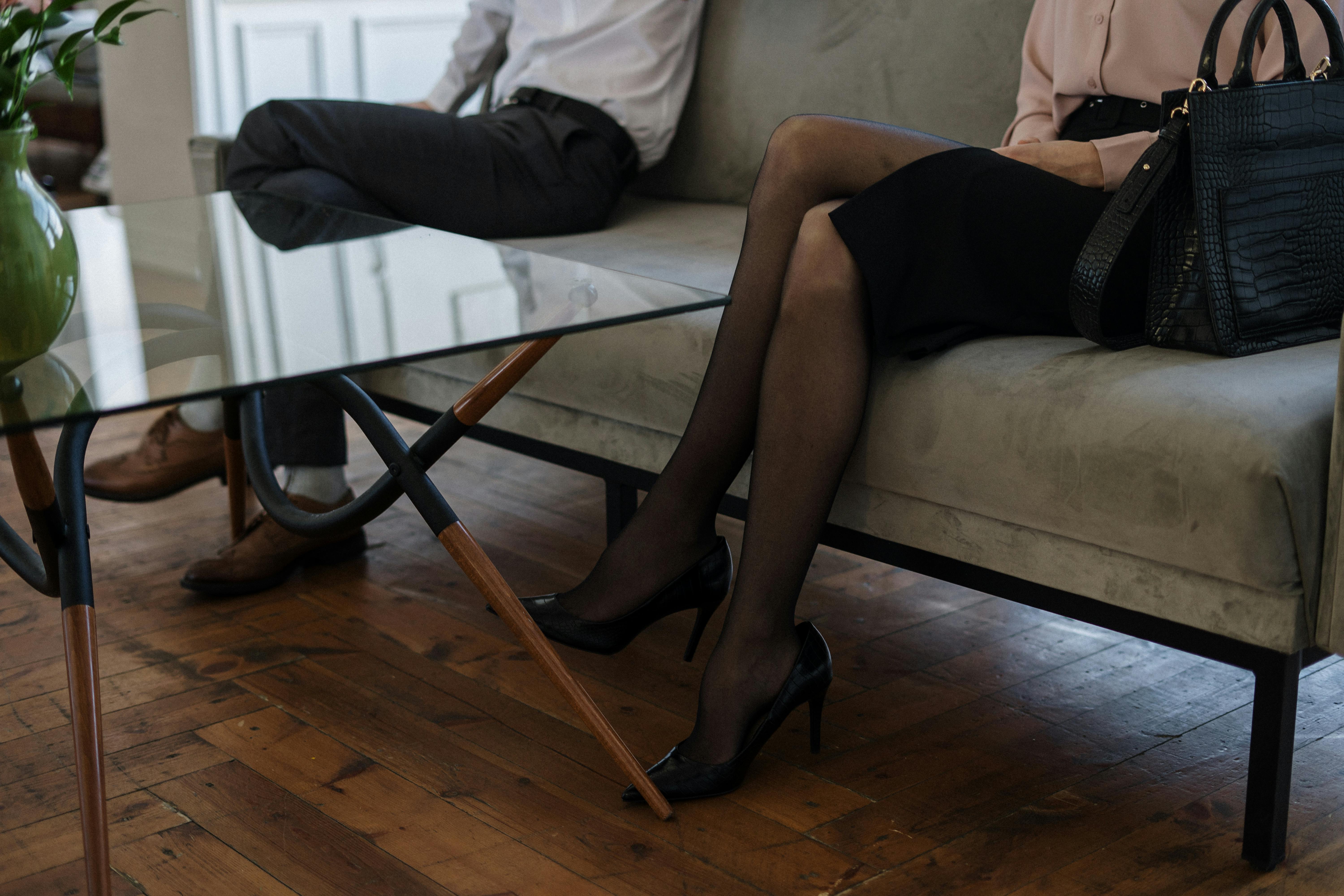
The Dreadlock Commandments: Do’s and Don’ts of the Dreadlock Process
admin
- 0
“Should I use this or should I use that?”
“What can I put in my hair?”
“Is it okay to wash my hair often?”
We ask ourselves a lot of questions when taking care of our locks. However, maintaining healthy hair can be simple (in fact, foolproof) when you know what to do and what not to do with your hair. This article will give you some basic tips on what to do and what not to do when it comes to lock maintenance. Before I introduce you to the do’s and don’ts, please note that there is no way to make an exhaustive list, however this list will get you started. When taking care of their locks, many people are bombarded with what they CANNOT do, that they forget to enjoy what they CAN do. Consider the NO’s and embrace the YES’s. The new freedoms your locks bring also give you the opportunity to DO a lot! Here are the “Dreadlock Commandments”:
YOU SHALL NOT USE WAX TO START YOUR LOCKS.
No matter what, never put any type of beeswax on your hair. In the past, many believed that using beeswax was the only reason to start locks. However, this ideology could not be further from the truth. In fact, using beeswax is actually not a good thing. One of the main reasons wax is a “no-no” is simply due to the fact that wax does not break down in water. What does this mean? It means that no matter how much you wash your hair, the beeswax will be on your locks forever. Wax also attracts debris, lint, dirt, pollutants, and other unwanted things to your hair that can also be difficult to wash out. If you ever know someone who uses beeswax on their hair, look at their strands and you’ll see the buildup that waxing has left over the years. There are other products that can be used to block hair that are also beneficial for hair. Products like lanolin, honey, olive oil, avocado butter, shea butter, and similar items can have the same holding power as wax, BUT they lead to healthier hair.
YOU SHOULD NOT MAKE THE CARE OF YOUR LOCKS COMPLICATED.
Lock maintenance is as simple as it gets. Some try to make the process a complicated maze so that others do not want to make this commitment. The only thing a lock user really needs to do is develop a good hair routine and stick to it. If necessary, you can get up and go without doing anything to your hair. Keeping the process simple makes this commitment even more attractive.
YOU SHOULD NOT WEAR YOUR HAIR IN THE SAME STYLE FOR A LONG TIME (OR REPEATEDLY).
Sometimes we get anxious when we get to different stages in the lockdown process. A big milestone will be when your hair is long enough to wear in a ponytail. Once you get to that stage, you may find yourself needing to put your hair up in a ponytail, EVERY DAY. Please resist this urge. Repeatedly wearing your hair in the same hairstyle day after day will create weak spots in those areas that are continually under stress from tight hair ties, hair clips, hair ties, and other hair accessories. For example, if you like to wear your hair in a ponytail every day, you may notice that in the same area on each strand you have a spot where it looks like your strands are going to break. This weak point is the constant use of a hair tie to hold the ponytail. Also, always pulling your hair back can also cause traction alopecia due to constant tension on the hairline. Just be mindful and try to give your locks time to JUST BE.
DO NOT OVERLOAD YOUR HAIR WITH TOO MANY PRODUCTS.
You will receive advice from people about what your locks need; but be careful what advice you listen to. Always research any tips you are not familiar with. For example, someone might recommend that you use conditioner on your locks; however, during the initial stages of the lockout process, conditioner is a “no-no.” If you use a lock stylist to maintain your locks, ask him or her for advice when it comes to unfamiliar recommendations. Remember, the less you put in your hair and do it, the better.
YOU’LL FIND AN EXPERIENCED LOCK STYLIST TO HELP YOU GET STARTED ON YOUR PADLOCKS (OR TO CONSULT).
Unless you are familiar with the lockout process, you may find that seeking out a knowledgeable lockout stylist is a great value. It is advisable to schedule a consultation with a lock stylist, before beginning on your locks. During this appointment, you can discuss your goals, try lock sizes, and provide pictures of the type of locks you are looking for. Additionally, during this appointment, you can also interview the hair stylist about her experience as a natural hair stylist. Even if you plan to maintain your strands yourself after you start, having a professional start the strands will ensure that your beginner strands are even and properly sized. When it comes to starting locks, SIZE DOES MATTER! If you start your locks too small, then your mature locks will be even smaller because the locks tighten as they mature. Also, starting with strands that are too small will lead to the unintended consequence of breaking and weakening later on.
YOU SHOULD LEARN ABOUT THE LOCKING PROCESS BEFORE YOU UNDERTAKE TO LOCK YOUR HAIR.
Equipping yourself with the knowledge about the transformations your locks will undergo will help make the entire locking experience more enjoyable. Also, learning about lock-stages will help you know whether or not your locks are following the rule when it comes to lock-stages. This knowledge will also help you determine if your hair is doing something weird that you want to discuss with your stylist.
YOU WILL EAT CORRECTLY.
Remember, your hair is the product of what you put on your body. This includes the food you eat, the fluids you drink, and any medicines you are taking. For example, if you find that your scalp is excessively dry, you may simply need to drink more water to hydrate, rather than adding unnecessary oils to your hair. Eating healthy not only benefits your body, but also helps your hair grow and shine. Additionally, exercise has also been shown to help with your hair growth.
YOU WILL DEVELOP YOUR OWN “LOCKOUT” SUPPORT SYSTEM.
Keep in mind that you are not the first person to block. So there is always someone who has been where you are in the blocking process. When you feel the need to give up or give up, reach out to those people who understand your plight and can help you get off the ledge. The blocking process IS NOT easy. It’s the best decision you’ve ever made, but it takes effort to keep your locks commitment. So, tell those friends who are already blocked that you are making that transition and that you will need their support. If you don’t have friends or family around to talk to, seek help online. There are many hair blogs, forums or social network pages with many people who can tell you that what happens to you has happened to them. Also, having a support system can help you see your goal more clearly.
YOU MUST DOCUMENT YOUR LOCKOUT PROCESS.
A Locking Journal is a great investment. This journal full of milestone pictures and words you write will help you better measure your growth. You will be able to remember the problems you had 6 months ago that you do NOT have now. In the journal you can also keep track of any new hair products or regimens you have taken in case you notice any changes in your hair. Also, keeping pictures of your hair at different stages of the styling process will help you “remember when.” So even if you hate your hair, take a picture. Months from now you will go back to that photo and appreciate that setting a little better. Years into the lockout process, you’ll look back at your journal, laugh at yourself, and value your locks even more.
YOU WILL ENJOY EVERY STAGE YOU HAVE YOUR MIX.
Each stage of the lockdown is unique and comes with its own set of events. To continue with the entire process, it is important that you appreciate the diffused strands just as you will appreciate the mature strands. Consider your locks as your child, and just like a child, you should raise them from a newborn to an adult. Be patient with your hair, and know that if you treat it right and are grateful for the little occurrences and milestones, your hair will grow into well-mannered adult locks. Just don’t get discouraged and give up because your hair won’t obey you.
YOU WILL HAVE THE END GOAL IN MIND.
This is probably one of the most important rules to live by. Understand that the appearance of your locks at first is NOT how it will look in its mature state. This means that when you start blocking, your blocks may be larger than you want. But keep in mind that as your hair gets tangled, they will get tighter. So a pencil-sized strand at first will be smaller as it matures. Also, there will be shrinkage at first, but as your locks grow, you’ll forget about it. Keep that in mind when you start blocking and it will give you something to look forward to as your blocks evolve.
YOU WILL BE OPEN TO QUESTIONS.
Just like you didn’t know everything about locks at first, when people see you with locks, they’re bound to ask questions. Answer people if they have valid questions. Now, you don’t have to open up to bullying, but answering valid questions might help another person feel comfortable in her shoes and get on the “blocked side.”
YOU WILL EMBRACE THE NEW YOU.
Deciding and going ahead with your hair lock requires the user to have a certain level of confidence and style. Your new style can also lead to changes in your wardrobe. Do what is best for you and your comfort level. Picking up your hair gives you a new sense of freedom that will spill over into other areas of your life. Accept the changes and have fun with them.
NOTE: You may discover, during your lock scan, that there are other items that can be included on your personal DO/DO NOT list. Feel free to tailor this list to your personal experience, adding those other things that also worked or did NOT work for you.

